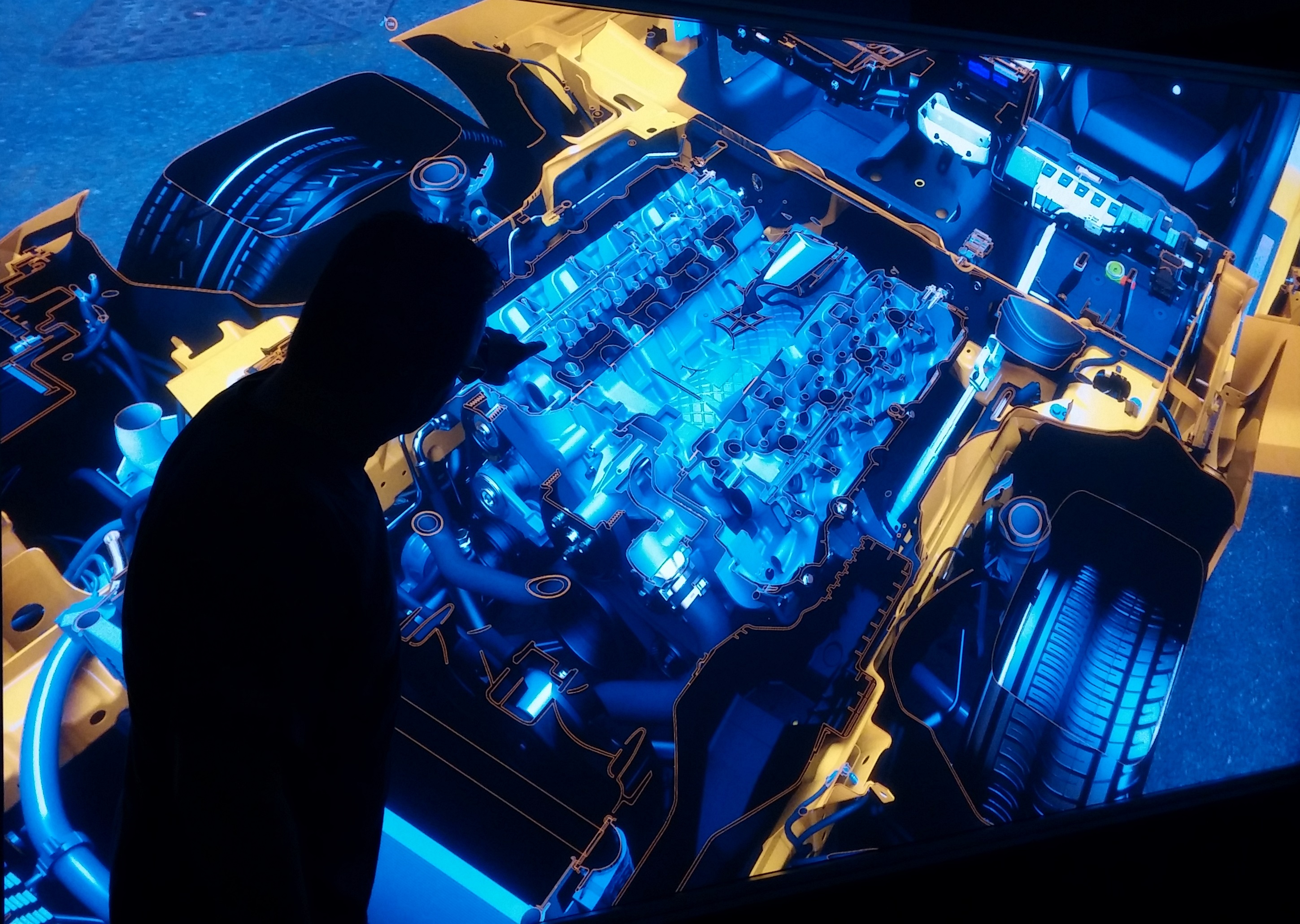

Are you looking for a more immersive experience to better evaluate your organization's data? Frequently used by manufacturing product design and engineering teams, VR Rooms are multiple-sided, virtual reality environments where single or multiple users are immersed in a real-time, rendered 3D environment. VR Room Systems allow a closer examination of data because by providing a lifelike virtual reality experience unmatched by any 2D screen.
VR Room systems provide a complete sense of immersion that makes the user feel like they are working with the actual model being evaluated. Virtual Reality systems can streamline go-to-market capabilities for companies looking to perfect their product when considering the tooling process and development of prototypes. Consumer goods, education, arts, and medical sectors have also improved capabilities using these unique immersive systems.
Anyone looking to immerse themselves in their data set can benefit from a VR Room. The most common applications are in design and engineering departments. Automotive companies leverage VR to view car models in full-size and collaborate across design, engineering, and manufacturing teams.
The consumer goods industry uses VR to design products and simulate store shelves, and even recreating a Virtual Store to test how shoppers react to store layouts, product placement, and packaging design.
Many major universities use VR Rooms in engineering, nursing, and arts departments. Examples include using VR Rooms to simulate clean rooms and having art students present their work in VR or 3D.
VR Rooms are typically rear-projected. This means the image is projected onto a translucent screen for viewing so you not only need space for the user but also space behind the walls of the VR Room for three to four projectors. In practice, a 10-by-10-foot VR Room might have a 30-by-20-foot footprint.
That said, Direct-View LED tiles are a consideration for VR Rooms as well. The benefits to using direct View LED match those of projected designs, with the additional features including lower maintenance, fewer consumables, less heat, and requiring much less space overall. A 10’ by 10’ VR Room constructed of direct view LED hardware could likely be built in an 11’ by 11’ space.
Unlike a PowerWall, the multiple walls of a VR Room use more projectors: usually four while a PowerWall only needs one. While costs vary, a VR Room can cost two to three times more than a PowerWall. And, if you are considering direct view LED then this is even more expensive due to the newness and high cost of the product at this point.
VR Rooms require additional technology to leverage the environment to its full capability. The main one is a tracking system that uses sensors to adjust the data and image to maintain perspective. Increased bandwidth and power are also common requirements, especially because running a VR Room too slowly can cause motion sickness in users. Also, VR Rooms users need to run software designed specifically for VR Rooms in order to maximize the system’s value.
If you are considering integrating a VR Room into your organization, IGI can help deliver an enhanced solution based on your exact applications, specifications, and budget. IGI is an industry leader in the complete integration of ultra-high resolution advanced visualization systems, including PowerWalls, mobile PowerWindows (visualization on the go), VR Rooms and Virtual Reality. We boast nearly 25 years’ experience in the advanced visualization industry managing all levels of AV integration projects.
Contact us for a consultation to learn more about how your company can realize the operational value of advanced visualization for your audio visual display needs.
Immersion Graphics, Inc. (IGI) provides audio visual design, engineering, consulting, product sales, control system programming, custom fabrication, installation, preventative maintenance, and extended support services out of its headquarters location in Detroit and west coast operation in Los Angeles. Additional offices are located in Indianapolis, and Grand Rapids.
Founded in 1998, IGI has installed numerous large-scale, ultra-high resolution systems throughout the U.S. in the automotive, higher education, medical, financial, and energy transmission markets, and for the United States military and other government agencies. Applications include industrial design, engineering, data visualization, mission-critical command & control room environments, presentation systems, video conferencing, digital signage, and a variety of commercial AV solutions. To get an in depth look at what we do, see our website at www.werigi.com, we are IGI.
IGI is minority owned, veteran owned, and a small business and SBA 8(a) program graduate.